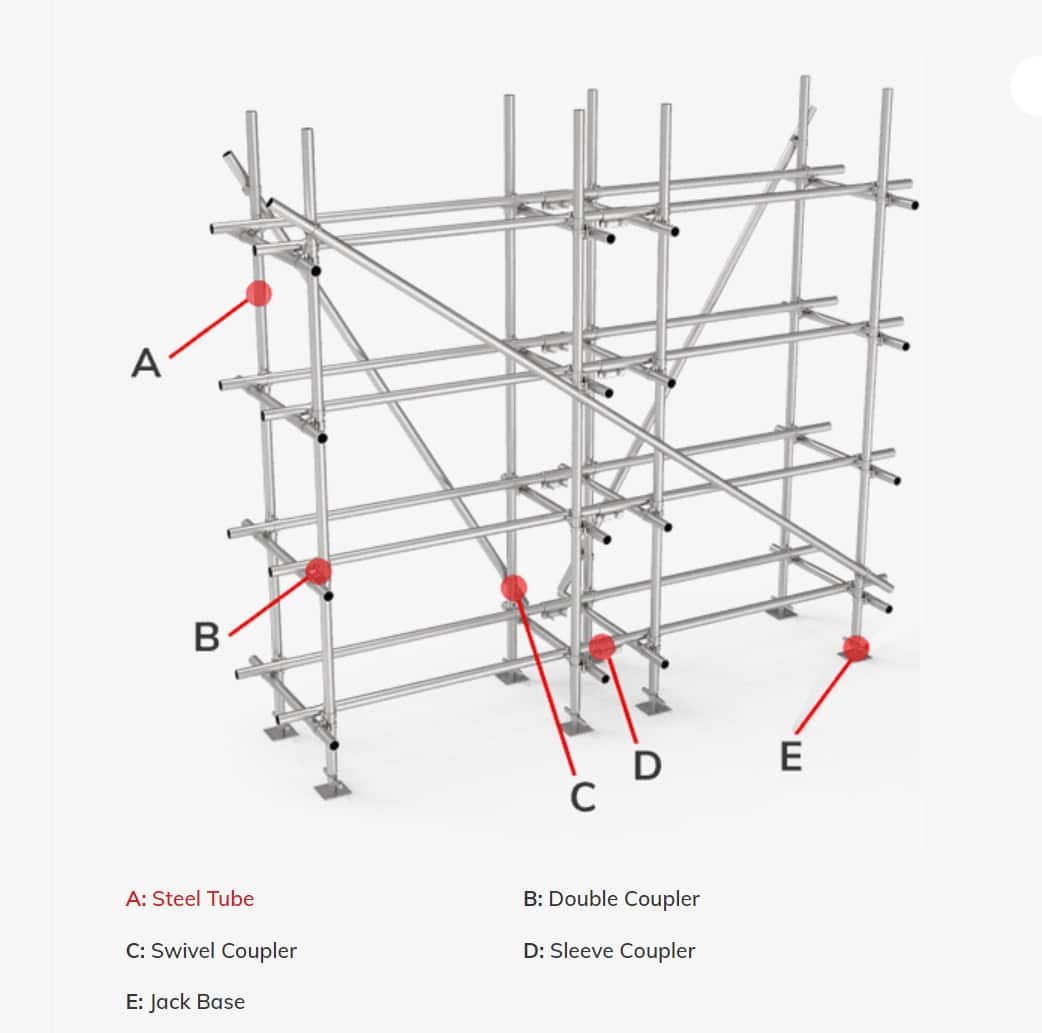Temporary Roof Scaffolding for Your Construction or Renovation Project
Temporary Roof Scaffolding for Your Construction or Renovation Project
Blog Article
Discovering the Different Kinds of Scaffolding Utilized in Building Tasks
The building market counts heavily on various types of scaffolding to satisfy specific task requirements, each offering distinctive advantages and applications. Conventional framework scaffolding supplies a tough structure for basic jobs, while put on hold scaffolding is important for work on high-rise frameworks.

Standard Framework Scaffolding
Conventional frame scaffolding is among one of the most commonly utilized methods in the building and construction sector as a result of its effectiveness and convenience. This system includes horizontal and vertical frames that are set up to produce a steady system for workers and materials. The major parts consist of vertical articles, straight journals, and angled braces, which with each other provide a strong framework that can support considerable lots.
Among the key advantages of conventional structure scaffolding is its adaptability to various construction tasks, varying from domestic structures to huge industrial structures. The modular layout enables for very easy assembly and disassembly, making it effective for both long-lasting and temporary tasks. Additionally, the system can be customized in elevation and width, fitting various structure layouts and website conditions.
Safety and security is critical in scaffolding applications, and standard framework systems are geared up with guardrails and toe boards to stop drops and make certain employee security. Additionally, regular assessments and adherence to security policies are critical in keeping the honesty of the scaffold. In general, conventional frame scaffolding remains a fundamental option in the building industry, providing a reputable system for labor and improving total job effectiveness

Suspended Scaffolding
Suspended scaffolding supplies a distinct solution for building tasks that need accessibility to elevated surface areas, particularly in circumstances where standard frame scaffolding might be impractical. This type of scaffolding is typically put on hold from the roofing system or upper degrees of a framework, using a system of ropes, pulley-blocks, and systems to create a working space that can be adapted to numerous heights.
One of the main benefits of suspended scaffolding is its versatility. It can be easily repositioned or decreased to suit changes in building demands, making it optimal for jobs such as home window installment, façade work, and maintenance on skyscrapers. In addition, the marginal footprint of suspended scaffolding allows for far better usage of ground room in city atmospheres, where area is frequently restricted.
Safety is a critical consideration in using suspended scaffolding. Correct rigging and anchoring systems must be employed to guarantee stability and protect against accidents. Operators must also be learnt the secure use this tools. On the whole, put on hold scaffolding offers a effective and efficient remedy for accessing hard-to-reach locations in numerous visit this site right here building and construction circumstances, improving both productivity and security on website.
System Scaffolding
System scaffolding, typically considered a modern-day remedy in the scaffolding market, contains pre-engineered elements that can be swiftly set up and adapted for various building projects. Scaffolding. This sort of scaffolding why not try here is defined by its modular design, which enables for versatility and performance on task websites, accommodating different heights and architectural demands
Commonly made from high-strength steel or light weight aluminum, system scaffolding provides boosted toughness and stability. The parts include upright messages, straight journals, and diagonal braces, which adjoin securely, guaranteeing a robust structure. The design typically integrates standardized installations, simplifying setting up and disassembly procedures, thereby minimizing labor time and prices.

Rolling Scaffolding
Moving scaffolding is a flexible alternative to conventional fixed scaffolding, made for wheelchair and simplicity of usage on building and construction sites. This kind of scaffolding includes a system sustained by frameworks with wheels, enabling employees to easily transfer it as needed. The movement function significantly boosts productivity, as it reduces downtime connected with assembling and dismantling taken care of scaffolding.
Commonly built from light-weight materials such as light weight aluminum or steel, rolling scaffolding uses a sturdy yet mobile solution for jobs calling for regular repositioning - Scaffolding. It is particularly helpful in tasks such as paint, drywall installation, and electric job, where access to different heights and places is essential
Safety is vital in rolling scaffolding layout, with functions such as securing wheels to avoid unexpected movement when being used, and guardrails to protect workers from falls. In addition, several versions are adjustable in height, fitting different task demands.
Cantilever Scaffolding

The style of cantilever scaffolding usually involves making use of brackets or arms anchored to a building or framework, enabling the system to extend exterior securely. Safety is vital; thus, these scaffolds have to be crafted to endure numerous tons and ecological conditions. Normal assessment and maintenance are necessary to guarantee architectural stability and employee safety.
Cantilever scaffolding is preferred for its flexibility and reliable use space, making it a prominent option in urban settings where area restraints prevail. In addition, it facilitates less complicated accessibility to high elevations, ultimately adding to the total efficiency of building jobs. Similar to all scaffolding types, correct training and adherence to safety requirements are critical for workers making use of cantilever scaffolding.
Verdict
Conventional structure scaffolding provides security, while put on hold scaffolding provides versatility for raised jobs. System scaffolding assists in quick assembly, and rolling scaffolding boosts flexibility for varying job atmospheres.
Standard framework scaffolding provides a tough foundation for basic jobs, while suspended scaffolding is essential for job on skyscraper frameworks.Rolling scaffolding is a functional option to conventional fixed scaffolding, developed for flexibility and simplicity of use on building and construction sites. As with all scaffolding types, proper training and adherence to safety criteria are crucial for workers utilizing cantilever scaffolding.
Typical frame scaffolding gives security, while suspended scaffolding supplies flexibility for raised tasks. System scaffolding assists in quick setting up, and rolling scaffolding enhances movement for varying job atmospheres.
Report this page